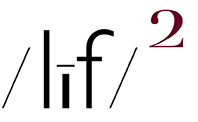all photos ~ (embiggenable)
THIS ENTRY HAS 2 PHOTOGRAPHS MADE IN NEW MEXICO––2 in Santa Fe and 3 photographs made in and around Hemez. The common item–– the cottonwood tree. If one were attempting, by making photographs, to capture / present a sense of place, and that place was in the area of New Mexico I was in, then one would have to include the cottonwood tree in most photographs. And that written, “BINGO” might be declared if a photo also includes an adobe structure.
RE: a sense of place - attempting to convey a sense of pace in a photograph is, iMo, a bit of a questionable endeavor. That’s cuz reducing the representation of a place to; a) a flat-as-a-pancake 2D plane, aka: minus a sense of depth, b) minus a sense of sound, and c) minus a sense of smell is similar to attempting to experience a sense of bourbon by licking the outside of a glass––fine Irish Waterford crystal, of course––of bourbon with a stuffed up nose.
iMo, in point of fact, what you get when you photograph a place is what that place looks like when photographed.
That written, an adroitly produced photograph of a place (or thing / person) can incite in a viewer notions of curiosity / interest and even a desire to experience, in person, that place. A viewer might actually experience a vicarious sensation of some kind––in his/her imagination––from such a photograph. However, I would suggest that the imagined experience is instigated more from the photograph itself rather than from the literally depicted referent* CAVEAT: in the Fine Art world. As John Szarkowski wrote:
“ A photograph produced [ED] … with that quality of formal rigor that identifies a work of art, so that we would be uncertain … how much our pleasure and sense of enlargement had come from the things pointed to and how much from a pattern created by the pointer.”
To wit, the photographs, made by others, that I like and the photographs I strive to make tend to come down on the pleasure and sense of enlargement that comes from a pattern created by the pointer side of Szarkowski’s ledger. Or, in other words, I like to make or view a photograph(s) that is a beautiful object(s), in and of itself; photographs of a referent selected from the quotidian world that is not customarily considered to be beautiful in of itself.
To my eye and sensibilities, that is the magic and the beauty of the medium of photography and its apparatus.
* that written, nevertheless, the form––aka: pattern––and the literally depicted referent are inexorably linked.
